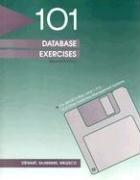Answered step by step
Verified Expert Solution
Question
1 Approved Answer
Q 1 : Let G: { 0 , 1 } ^ n - > { 0 , 1 } ^ n is a PRG .
Q: Let G:nn is a PRG We define Hk xGkx is Hk a PRF If yes, explain why; if not, give an explicit attack a PPT adversary that violates the definition pts
Q: Given a PRF E:Ktimes nm we construct F:Ktimes nm as follows:
FKx:EKxEKx
Is FK still a PRF If yes, give a brief proof, if not, give a brief attack showing the violation of PRF definition. pts
Q: Can we construct a PRG from a PRF assuming the PRF output length is larger than the key length or the input length If yes, give the concrete construction and briefly explain; if not, explain why. pts
Symmetric key encryption: Suppose KeyGen Enc, Dec is an INDCPA secure symmetric key encryption. We define the following new encryption algorithms, are the new schemes still INDCPA secure Briefly explain why. If you believe it is insecure, provide an explicit attacker violating the INDCPA definition.
Q: Enckm is defined as follows:
It runs Enckm and obtains c;
It runs Enckm again to obtain c The final ciphertext will be cc pts
Q: Enckm is defined as follows:
It runs Enckm and obtains c;
It runs f on m to obtain c where f is a pseudorandom generator. The final ciphertext will be cc pts
Message Authentication Codes.
Suppose Pi :KeyGenTagVerify and Pi :KeyGenTagVerify are two message authentication code schemes.
Q: Pi :KeyGenTagVerify is defined as follows:
KeyGen first runs KeyGen obtains k and then runs KeyGen obtains k the output key is k k
Tagk km m first runs Tagk m and obtains sigma and it runs Tagk mm and obtains sigma where the message m that Tag works on is a pair of messages m m The final tag is sigma sigma sigma The verification can be defined accordingly.
Is Pi a secure MAC? Briefly explain why. pts
Q: Pi :KeyGenTagVerify is defined as follows:
KeyGen is identical to KeyGen and it outputs a key k
Tagkm m first runs Tagk m and obtains sigma and it runs Tagk m and obtains sigma The final tag is
sigma sigma sigma
Is Pi a secure MAC? Briefly explain why. pts
Q: Given two constructions of message authentication codes Pi :KeyGenTagVerifyPi :KeyGenTagVerify Construct a secure MAC scheme Pi :KeyGenTagDec which will be secure unforgeable as long as one of Pi Pi is unforgeable but you dont know which one and briefly explain why. pts
Q: Explain why the following paradigm does not provide secure authenticated encryption, ie an encryption scheme that satisfies both INDCPA security and ciphertext integrity where the adversary cannot create new ciphertexts without knowing the key or asking the encryption oracle The paradigms encryption algorithm initially executes an Enc algorithm on message m to obtain c then runs a Tag algorithm on message m and obtains sigma The final ciphertext will be csigma pts
Step by Step Solution
There are 3 Steps involved in it
Step: 1

Get Instant Access to Expert-Tailored Solutions
See step-by-step solutions with expert insights and AI powered tools for academic success
Step: 2

Step: 3

Ace Your Homework with AI
Get the answers you need in no time with our AI-driven, step-by-step assistance
Get Started


